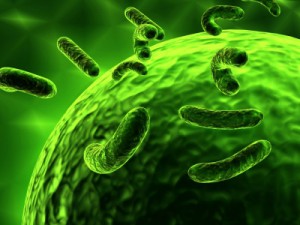Current state of research on aPDT
If you want to learn more about the current reseaarch state of aPDT and it´s potential to treat tropical diseases, please check our literature collection.

Malaria
Photosensitizers:
Methylene Blue, methylated derivatives, crystal violet, Pc4
Literature:
M.S. Baptista/ M. Wainwright (2011): Photodynamic antimicrobial chemotherapy (PACT) for the treatment of malaria, leishmaniasis and trypanosomiasis. In: http://www.bjournal.com.br/administrator/components/com_jresearch/files/publications/618.pdf
Wainwright M, Amaral L. (2005): The phenothiazinium chromophore and the evolution of antimalarial drugs. In: Trop Med Int Health. 2005 Jun;10(6):501-11.
Schirmer et al (2003): Methylene blue as an antimalarial agent. In: Redox Rep. 2003;8(5):272-5.
Danielle LeBlanc, Robert Story, and Eitan Gross (Department of Physics, University of Arkansas, Fayetteville, AR 72701, USA): Laser-induced inactivation of Plasmodium falciparum (http://www.malariajournal.com/content/pdf/1475-2875-11-267.pdf):
Todd G. Smith, and Kevin C. Kain (Department of Medicine, University of Toronto, and McLaughlin-Rotman Center for Global Health, McLaughlin Center for Molecular Medicine,University of Toronto, and Tropical Disease Unit, University Health Network-Toronto General Hospital, Toronto, Ontario, Canada (http://jid.oxfordjournals.org/content/190/1/184.full.pdf):
S. Lustigman, E. Ben-Hur†: Photosensitized inactivation of Plasmodium falciparum in human red cells by phthalocyanines
Jérôme Dormoi, Aurélie Pascual, Sébastien Briolant, Rémy Amalvict, Serge Charras, Eric Baret, Emilie Huyghues des Etages, Michel Feraud, and Bruno Pradines: Proveblue (Methylene Blue) as an Antimalarial Agent: In Vitro Synergy with Dihydroartemisinin and Atorvastatin
Philippe Grellier1, René Santus2, Elisabeth Mouray1, Vered Agmon3, Jean-Claude Mazière2, Daniel Rigomier4, Arie Dagan3, Shimon Gatt3, Joseph Schrével: Photosensitized Inactivation of Plasmodium falciparum- and Babesia divergens-Infected Erythrocytes in Whole Blood by Lipophilic Pheophorbide Derivatives
Zhao XJ, Lustigman S, Li YS, Kenney ME, Ben-Hur E.: Structure-activity and mechanism studies on silicon phthalocyanines with Plasmodium falciparum in the dark and under red light.
Tuberculosis
Photosensitizers:
benzo[a]phenothiazinium chloride, benzo[a]phenoselenazinium chloride
Literature:
O’Riordan K, Akilov OE, Chang SK, Foley JW, Hasan T.: Real-time fluorescence monitoring of phenothiazinium photosensitizers and their anti-mycobacterial photodynamic activity against Mycobacterium bovis BCG in in vitro and in vivo models of localized infection.
O’Riordan K, Sharlin DS, Gross J, Chang S, Errabelli D, Akilov OE, Kosaka S, NauGJ, Hasan T.: Photoinactivation of Mycobacteria in vitro and in a new murine model of localized Mycobacterium bovis BCG-induced granulomatous infection.
Saatci AO, Selver OB, Yaman A, Arikan G, Sayiner A, Akkoclu A.: Photodynamic therapy as an adjunct to systemic treatment in a case with unilateral presumed vascularized choroidal tuberculous granuloma.
Elke Feese and Reza A. Ghiladi*: Highly efficient in vitro photodynamic inactivation of Mycobacterium smegmatis
Nackmoon Sunga et al.: Inactivation of multidrug resistant (MDR)- and extensively drug resistant (XDR)-Mycobacterium tuberculosis by photodynamic therapy
HIV
Photosensitizer:
Hypericin, Pc 4, HMME, Methylene Blue, Rose Bengal
Literature:
Ben-Hur E, Oetjen J, Horowitz B.: Silicon phthalocyanine Pc 4 and red light causes apoptosis in HIV-infected cells.
Yingxin Li, Huijuan Yin, Yongtang Zheng (2011): Cleaning blood of human immunodeficiency virus. SPIE Newsroom. DOI: 10.1117/2.1201105.003320. http://spie.org/x48531.xml
Huijuan Yin,: ANTI-HIV-1 Activities of Photodynamic Therapy Using Hematoporphyrin Monomethyl Ether.
B. Bhagwandin1,2, N. Loebel3, S. Baskaran3, R. Andersen3: Use of antimicrobial photodynamic therapy for prevention of HIV transmission from mother to child: a novel approach
Hudson et al. (1993): The importance of light in the anti-HIV effect of hypericin. In: Antiviral Res. 1993 Feb;20(2):173-8.
Degar et. al (1992): Inactivation of the human immunodeficiency virus by hypericin: evidence for photochemical alterations of p24 and a block in uncoating. In: AIDS Res Hum Retroviruses. 1992 Nov;8(11):1929-36.
Lenard J, Rabson A, Vanderoef R.: Photodynamic inactivation of infectivity of human immunodeficiency virus and other enveloped viruses using hypericin and rose bengal: inhibition of fusion and syncytia formation.
Lavie G, Mazur Y, Lavie D, Prince AM, Pascual D, Liebes L, Levin B, Meruelo D.: Hypericin as an inactivator of infectious viruses in blood components.
North et al. (1993): New trends in photobiology: Photosensitizers as virucidal agents. In: Journal of Photochemistry and Photobiology B: Biology. Volume 17, Issue 2, Pages 99–108
http://www.infectioncontroltoday.com/news/2005/10/protein-in-st-john-s-wort-found-to-suppress-hiv-1.aspx: Protein in St. John’s Wort Found to Suppress HIV-1 Gene Expression
Pneumonia
Photosensitizers:
Toluidune blue O, Trovafloxacin
Literature:
http://www.prweb.com/releases/OndineBiomedicalVAP/Photodynamic/prweb8518311.htm: Ventilator-Associated Pneumonia (VAP) Study Shows Reduction of Biofilms Using Antimicrobial Photodynamic Therapy
http://www.ncbi.nlm.nih.gov/pubmed/20552385: Laser light combined with a photosensitizer may eliminate methicillin-resistant strains of Staphylococcus aureus.
http://jac.oxfordjournals.org/content/45/4/503.full: A comparison of the photosensitizing potential of trovafloxacin with that of other quinolones in healthy subjects
Human Papilloma Virus
Photosensitizers:
Hexaminolevulinate, Methylaminolevulinate
Literature:
Soergel P, Dahl GF, Onsrud M, Hillemanns P.: Photodynamic therapy of cervical intraepithelial neoplasia 1-3 and human papilloma virus (HMV) infection with methylaminolevulinate and hexaminolevulinate–a double-blind, dose-finding study.
Leishmaniasis
Literature:
Baptista MS, Wainwright M.: Photodynamic antimicrobial chemotherapy (PACT) for the treatment of malaria, leishmaniasis and trypanosomiasis.
Hepatitis
Photosensitizers:
Porphyrins, Methylen Blue
Literature:
Michael J. Casteel et al.: Photoinactivation of Hepatitis A Virus by Synthetic Porphyrins
Eike Steinmann, Ute Gravemann, Martina Friesland, Juliane Doerrbecker, Thomas H. Müller, Thomas Pietschmann, Axel Seltsam: Two pathogen reduction technologies—methylene blue plus light and shortwave ultraviolet light—effectively inactivate hepatitis C virus in blood products.


